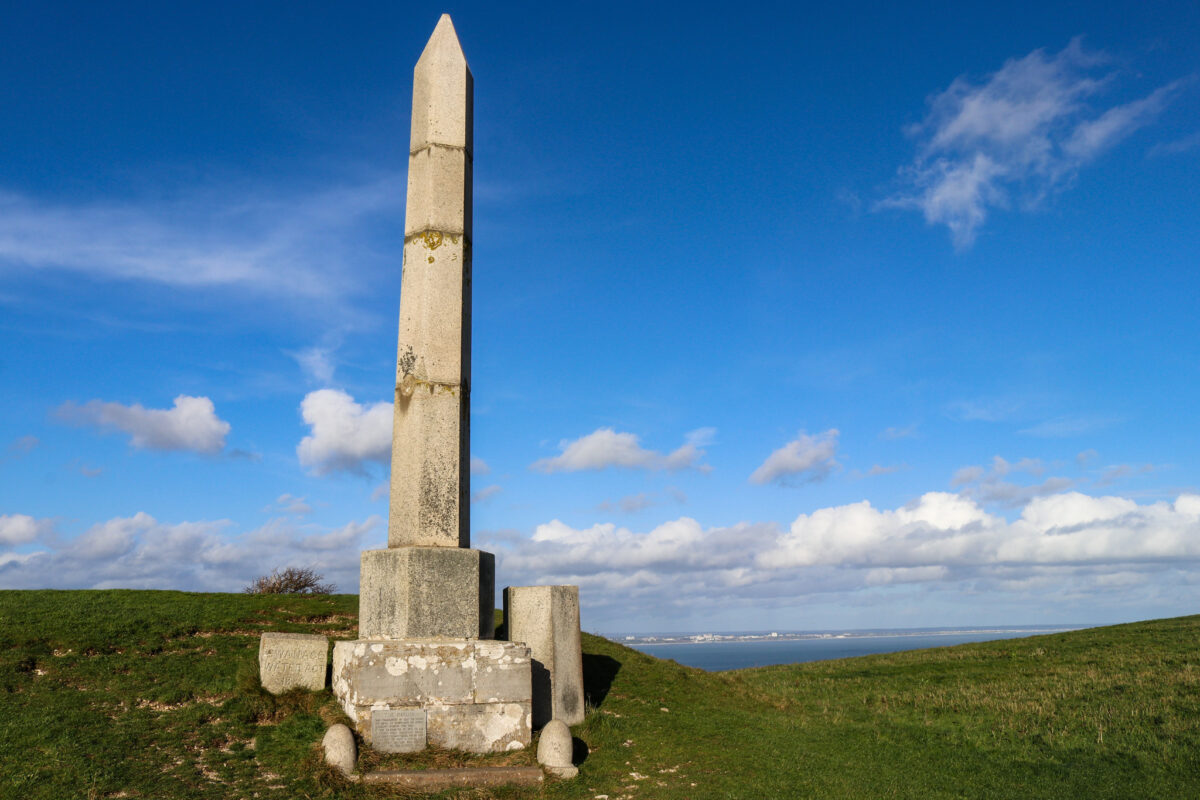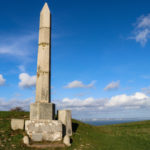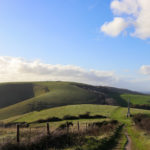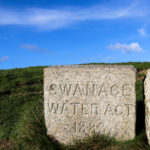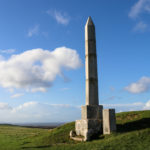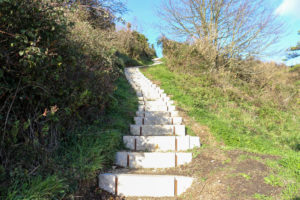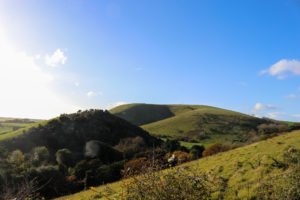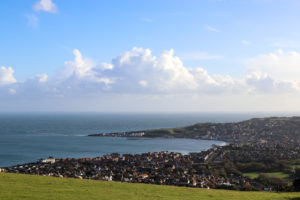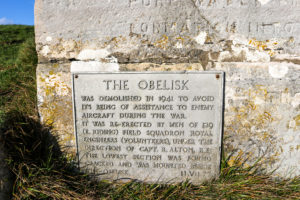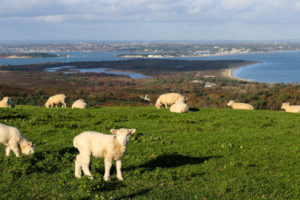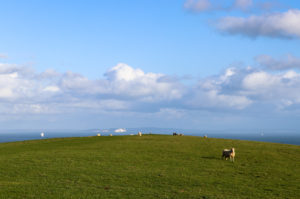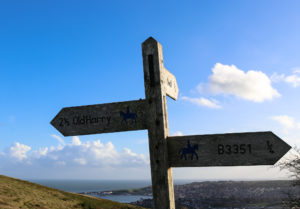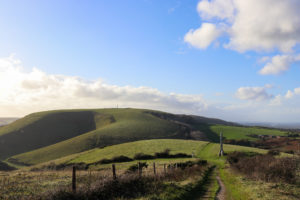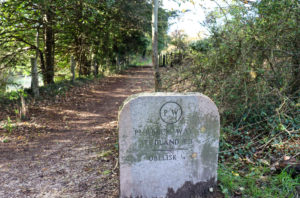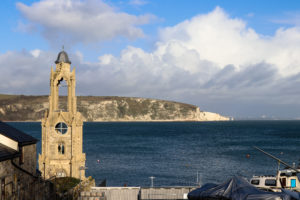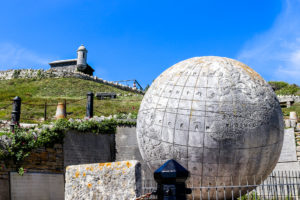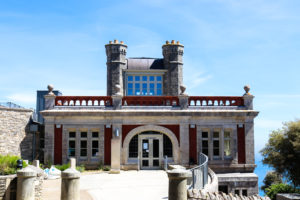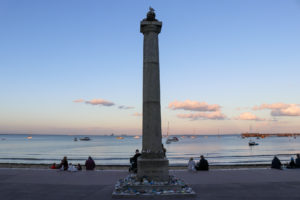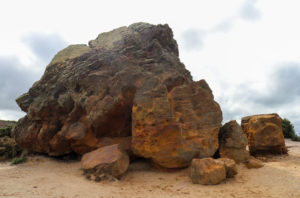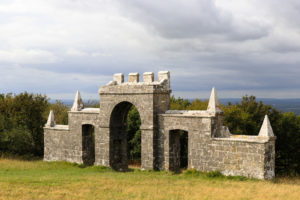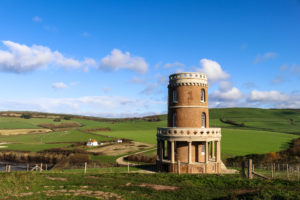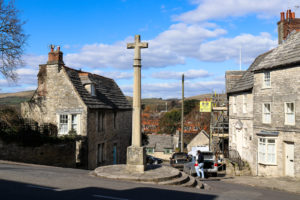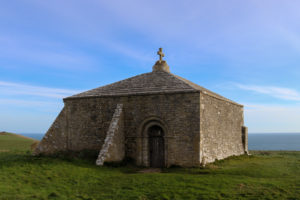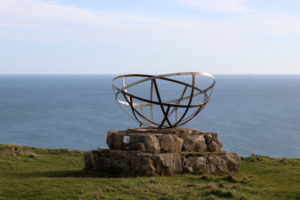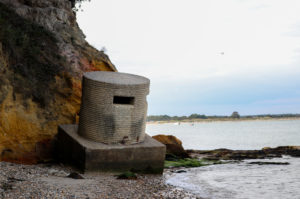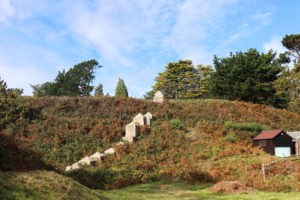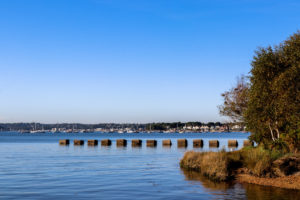This towering hexagonal monument was brought to Swanage from London by George Burt – a local businessman and founding father of much of the town – in 1892.
The obelisk stands upon a prehistoric barrow (a mound of earth typically situated over an important grave) on North Hill on the Ballard Down headland and was installed to commemorate the provision of a new water supply to Swanage in 1883.
The walk up to the obelisk will reward you with stunning views across Swanage Bay, as well as over Studland Bay, Poole Harbour and toward the Isle of Wight.
Ballard Down is part of the Purbeck Hills chalk ridgeway, which is popular with walkers and cyclists and runs through Purbeck past Corfe Castle and nearly all the way to Lulworth.
History
One of George Burt’s many legacies in Swanage, the granite obelisk was originally in situ in central London, outside the St Mary of the Nativity (also known as St Mary Woolnoth) Church. The church is on the corner of King William Street and Lombard Street, near Bank.
In 1892 Burt erected the obelisk on its present site to commemorate the town’s water supply that was installed in 1883.
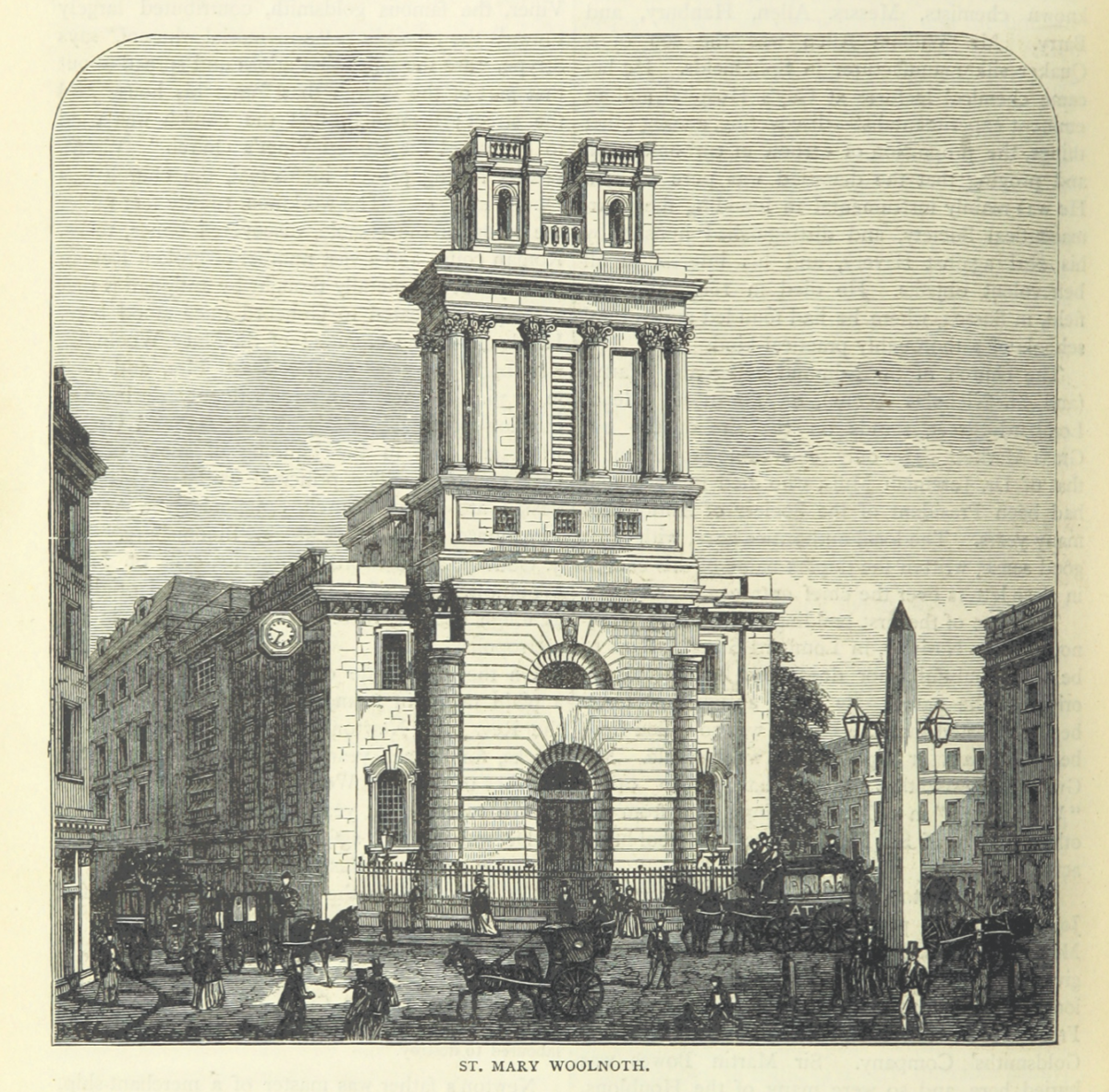
In 1941, during WW2, the obelisk was taken down through fear that it might act as a navigation aid. An information plaque reads:
‘The obelisk was demolished in 1941 to avoid its being of assistance to the enemy aircraft during the war.
It was re-erected by men of 129 (E. Riding) Field Squadron Royal Engineers (volunteers) under the direction of Capt. R. Alton R.E.
The lowest section was found cracked and was mounted beside the obelisk. II.VII.73’
The obelisk was then re-erected in 1973 and is now Grade II-listed.
In his comic travel book Notes from a Small Island, Bill Bryson likens walking along Ballard Down as almost heavenly. Despite being slightly underwhelmed as to the story behind the monument in ‘such a remote and challenging spot’, Bryson found that exploring Ballard Down, despite being ‘a taxing slog for an old puffed-out flubba-wubba’ was ‘worth it for the view, which was sensational – like being on top of the world’:
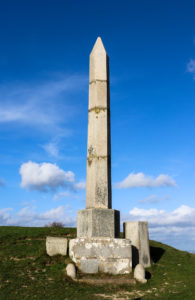
‘For miles around, the Dorset hills rolled and billowed, like a shaken-out blanket settling on to a bed. Country lanes wandered among plump hedgerows and the hillsides were prettily dotted with woodlands, farmsteads and creamy flecks of sheep. In the distance the sea, bright and vast and silvery blue, stretched away to a mountain of tumbling cumulus. At my feet far below, Swanage huddled against a rocky headland on the edge of a horseshoe bay, and behind me lay Studland, the marshy flats of Poole Harbour and Brownsea Island, and beyond that a hazy infinity of meticulously worked farmland. It was beautiful beyond words, one of those rare moments when life seems perfect.’
Explore around the obelisk
The obelisk is one of the many unique historical features of the Isle of Purbeck.
Once you’ve made it up here, there is still lots to explore – from simply soaking up the stunning views, to heading off on the next leg of your adventure – turn right when you reach the obelisk to continue walking along Ballard Down for views across to the Isle of Wight and walk along the way to view the famous Old Harry Rocks, or turn left to walk toward Corfe Castle along the Purbeck Ridgeway.
Corfe Castle – Obelisk – Swanage walk
The obelisk is located on the Purbeck Ridgeway – a popular (though hefty) walk encompasses the obelisk by beginning in Corfe Castle and following signs for the Purbeck Way.
It leads you along the ridge, over Nine Barrow Down (a Bronze Age burial site), across to the obelisk and toward Old Harry Rocks for the view, before heading back toward Swanage and into town.
Once you’ve stopped for a bite to eat in one of the Swanage’s many cafés, pubs or restaurants you can hop on a bus or catch the steam train back to Corfe.
How to get there
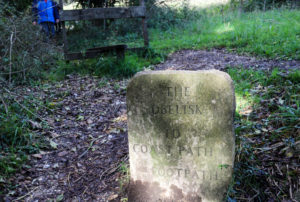
Postcode for your SatNav: BH19 3DG
The easiest way to get to the obelisk is by driving to the parking area on Ulwell Road at the northern end of town.
From there, you can walk through the gate and follow the signs up the hill up to the obelisk.
It’s a fairly steep and challenging climb involving hill paths and numerous steps, but the views and experience of this quirky piece of Swanage’s history are well worth it.
The Village Inn pub at Ulwell Holiday Park is a short stroll from the foot of the hill to the Obelisk, so you can stop and recharge after your walk with a drink or some traditional pub grub.
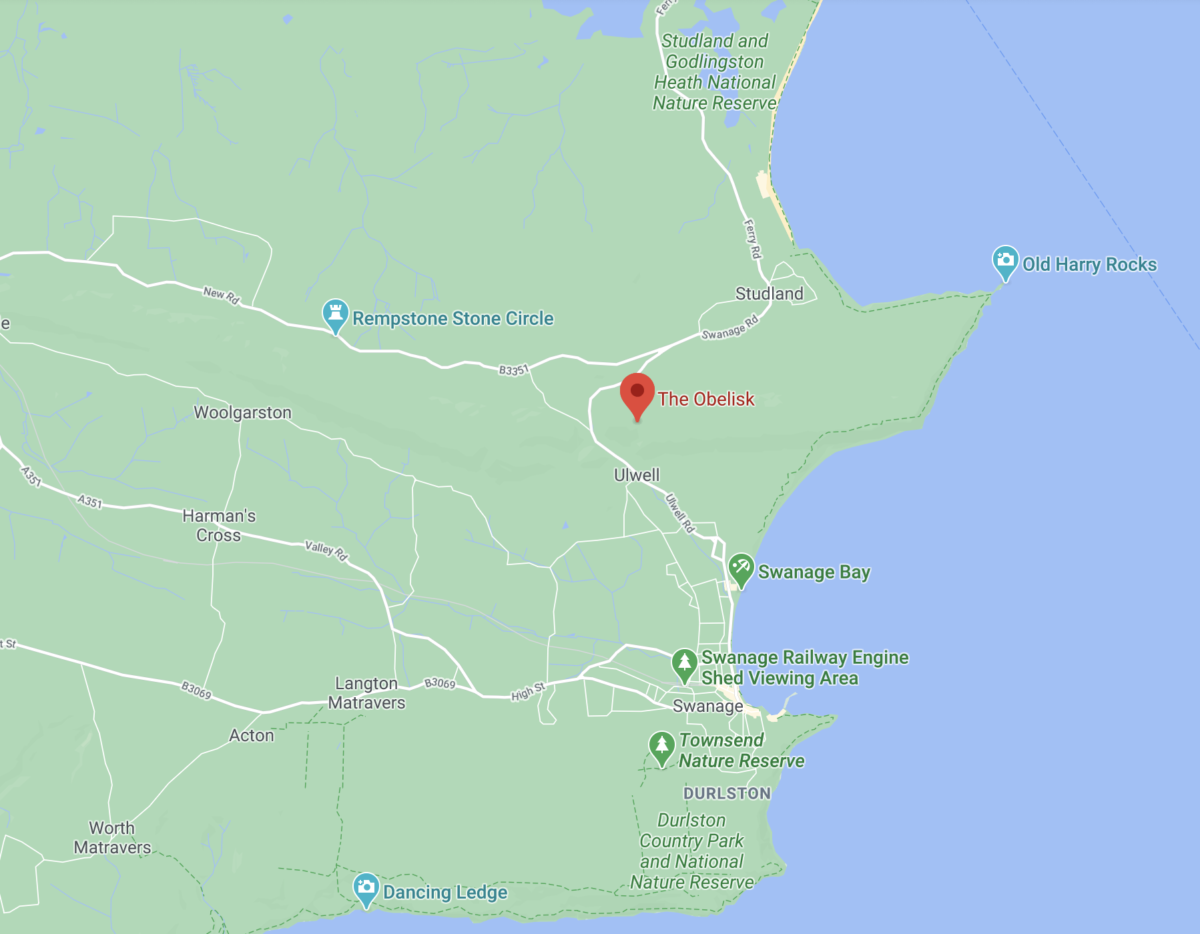
Prince Albert memorial obelisk
A newly-erected second obelisk can be found just by Swanage Bay above Prince Albert Gardens.
Originally erected at the town’s entrance in 1862, this obelisk was the first memorial to Prince Albert in Britain. This monument was removed in the ’70s and only returned to Swanage in its new form in 2021. Some would say this is a more apt location for a memorial spot due to its proximity to Durlston Bay, where reportedly Prince Albert once docked and enjoyed the climb to Peveril Point. Much of the column is original with some missing or broken parts replaced or renewed by local stonemasons.
Memorials to Albert pay homage to his legacy for supporting social reform and anti-slavery and anti-child labour campaigner. He helped make changes for the conditions of the working classes and became known amongst ordinary people as ‘Albert the Good.’
It’s a considerably easier monument to discover, being a stone’s throw from Broad Road car park, or a short walk from the town and pier. The Prince Albert memorial obelisk, like its sister one on Ballard Down, gives the visitor fantastic views across Swanage Bay, albeit an entirely different viewpoint, and a dramatic vista of the ridgeway, Old Harry Rocks and over to Bournemouth.
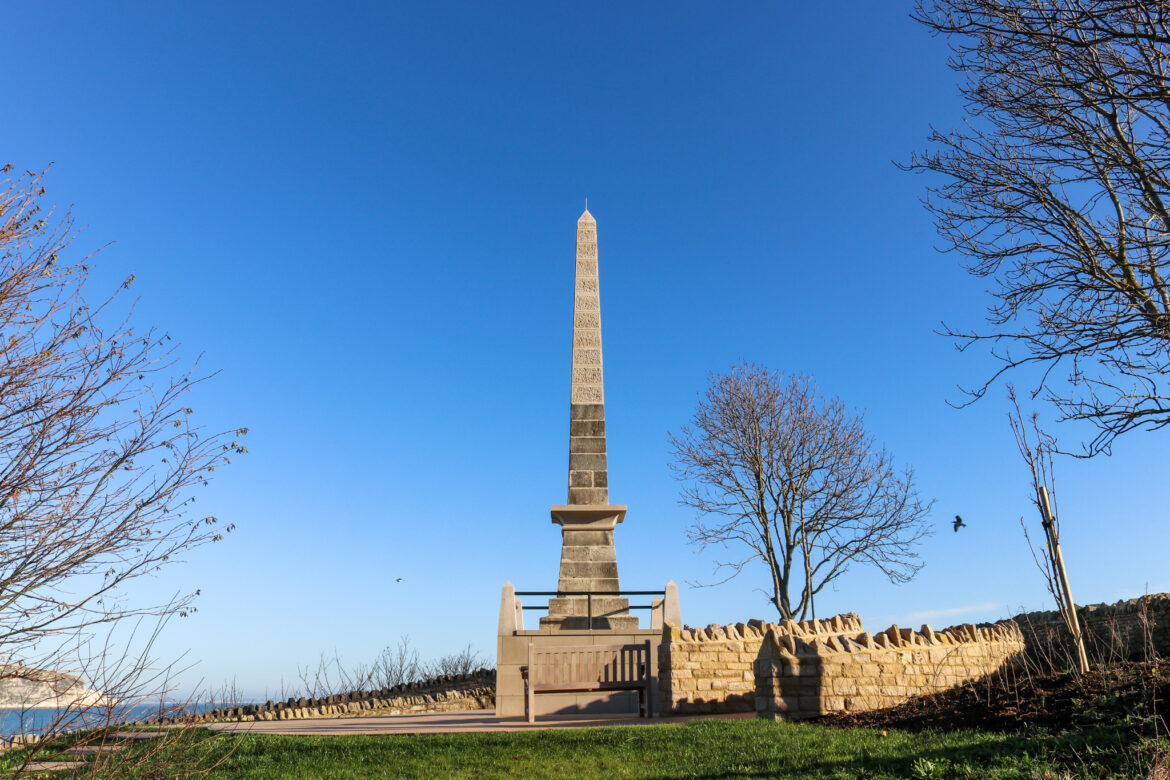
More nearby quirky landmarks
Visit more Victorian landmarks in Swanage, legacies left by George Burt and John Mowlem.
George Burt was a great champion of Swanage and as part of his gentrification of the town, he brought the Wellington Clock Tower back from London as a ballast on his ship and installed it on Peveril Point. Despite not actually having a statue of Wellington or the intended clock faces, the tower remains a prominent feature of the town and is Grade II listed.
Burt went on to install the Great Globe at Durlston and had Durlston Castle built as a folly and restaurant. Both are now part of Durlston Country Park and the ‘castle’ still houses a restaurant today.
The monument to King Alfred sits on the seafront near to The Mowlem Theatre. The Tuscan column was installed in 1832 by John Mowlem (Burt’s uncle) and is topped by canon balls from the Crimean War.
Other unusual Purbeck landmarks
Dotted across Purbeck are more unusual sites to incorporate a bit of history into your walk:
There are follies, such as Clavell Tower in Kimmeridge and Grange Arch hidden amongst the Purbeck Hills; natural wonders such as the curious Agglestone on Godlingston Heath; and various memorials to people or events in history, such as the memorial cross on Church Hill and the Purbeck Radar memorial, which celebrates pioneering work carried out in the area of Worth Matravers on the development of radar during World War II. Nearby to the radar monument is St Aldhelm’s Chapel – a remote, clifftop chapel with an unusual, square design whose corners point toward the cardinal points of the compass.
There are various other WW2 relics throughout Purbeck, too. You’ll find ‘dragon’s teeth’ and pill boxes in both Studland Bay and Kimmeridge Bay.
